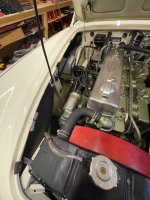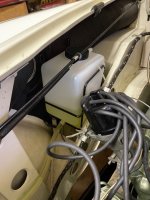nevets
Jedi Knight
Offline
Soon after setting out for a drive (engine cold and warmed up a bit), I saw the water temp gauge go all the way up to 212, then settle down to about 180 after a few minutes, which is where it stayed, until I stopped for a few minutes. When I started back up, the temp went up again, beyond 212, nearly 230, before quickly settling down to around 180. My thoughts are that the thermostat may be malfunctioning (it's never been changed)? Or possibly the coolant expansion tank I installed recently may be a factor? From experience, I am aware that the temp reading goes way up after a warm engine is turned off, then goes back down once the coolant starts circulating, but this seems out of the ordinary. Any thoughts will be appreciated.

 Hi Guest!
Hi Guest!

 smilie in place of the real @
smilie in place of the real @
 Pretty Please - add it to our Events forum(s) and add to the calendar! >>
Pretty Please - add it to our Events forum(s) and add to the calendar! >> 



